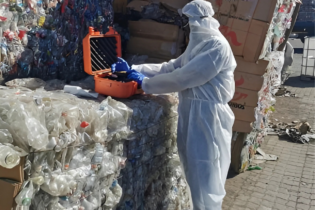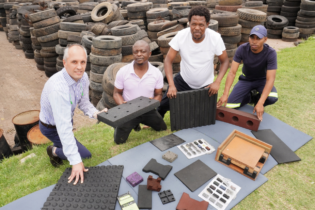A 20% reduction in waste to landfill by 2014 and 70% S@S (separation at source) at household level in three years are two of the innovative targets announced by the executive mayor of Johannesburg, councillor Mpho Parks Tau, as part of a new waste management strategy for the City.
Oelofse also shared lessons learnt from current or past awareness campaigns, like the fact that clean-up campaigns do not succeed in changing behaviour, or that incentives associated with clean-up campaigns often reward bad behaviour. “Payment for clean-up campaigns must be decoupled from waste volumes,” she advised.
She noted that the message of awareness campaigns needed to be clear, as well as that of “do no litter” or “reduce, reuse, recycle”, and that these awareness programmes must be ongoing in order to continue reminding people. Most importantly, for the awareness campaigns to have any impact the recycling initiatives need to be started and the infrastructure in place before creating awareness, otherwise participants would lose interest. Waste pickers are key economic actors According to Cecilia Njenga, not only are there 15 million waste pickers in developing countries worldwide, but they are key economic actors and their choice of employment can form a viable source of alternate green jobs She said the promotion of green jobs formed one of the greatest challenges for developing cities and required a multifaceted, multi-stakeholder approach – such as the approach instigated by the City of Johannesburg through the hosting of the summit. In investigating the international trends with regards to waste pickers, Njenga pointed out that recycling conserved more energy when compared to mining and raw materials processing, and also allowed for a large participation of women and children. “There, however, needed to be a certain degree of formalisation because the formalisation and organisation of the workers could turn waste management and recycling into a significant approach for social cohesion or inclusion.” Through the utilisation of waste pickers as key economic actors, a number of gains could be achieved by local municipalities and government, according to Njenga. These gains include economic savings for municipal waste management in developing countries, the generation of self-employment in poor populations, as well as waste pickers providing the largest portion of materials that re-enter the production process. “Recycling is one of the fastest growing sources of green employment,” said Njenga, adding that the waste and recycling market generated approximately US$437 billion per year worldwide. The formalisation or integration of waste pickers into the green economy opportunities would therefore yield significant benefits, such as an increased earning potential and better working conditions and social welfare, for the pickers themselves. But most importantly it can drive a community out of poverty, concluded Njenga. Balancing the ecosystem in Johannesburg Human beings must take a leaf from nature where nothing is wasted and everything contributes to balancing the ecosystem. This was one of the major themes to emerge from the second day of the summit. This realisation coupled with the serious need for South Africa to find new and sustainable sources of energy, presented an unlimited business opportunities. The summit attracted about 400 delegates representing various organisations in the recycling and renewable energy sector. Growing populations and in particular in Gauteng, which has now surpassed KwaZulu-Natal as the most populous province in the country, have forced a mindset change and the need to think green. The number of people in Gauteng meant that landfill sites were fast piling up and new sites would be required to cope with the ecological challenges caused by this growth. This, however, presented possibilities for innovation and developing new business models. One such opportunity has been identified by Novo Technology, a company in East Rand, Gauteng, that is turning the landfill sites into prospects for itself and the taxi industry. In one of a range of impressive presentations at the summit, Novo Energy technology manager Eddie Cooke, whose company is running a pilot project in Sebenza, near the OR Tambo airport, said his company was using gas extracted from landfill sites to make fuel for taxis. According to Cooke, about 60 taxis, which are part of a pilot project, are already showing a reduction of up to 30% in fuel costs by converting from petrol to compressed biogases sourced from what is commonly referred to as dump sites. With taxis being the biggest consumers of fuel and therefore the biggest contributors to gas emissions, an uptake by more taxis could be a win-win for the environment and for the business, to say nothing of the possible reduction in the high cost of travelling.







